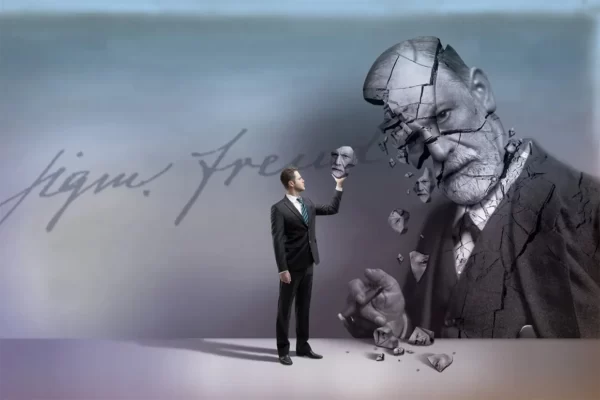Voyeurism is a phenomenon that has long remained in the shadows of public discussion, but in recent years it has increasingly become a subject of discussion, research, and cultural analysis. The term comes from the French word voir (to see) and describes deriving sexual satisfaction from secretly observing other people, usually during intimate moments.
In the modern world, where boundaries between public and private are becoming increasingly blurred, and technology opens new possibilities for observation, the topic of voyeurism takes on particular relevance. It touches on important questions about the nature of human sexuality, ethics, the right to privacy, and the impact of digital technology on our behavior.
Voyeurism can manifest in various forms: from peeping at neighbors to watching pornography or even using hidden cameras. In psychiatry, voyeurism is classified as a paraphilia—a sexual disorder characterized by recurring, intense sexual urges, fantasies, or behaviors involving unusual objects, activities, or situations.
However, it’s important to note that not all forms of voyeurism are pathological. Some forms of “mild” voyeurism, such as observing people in public places or watching erotic materials with participants’ consent, may be considered part of the normal spectrum of human sexuality.
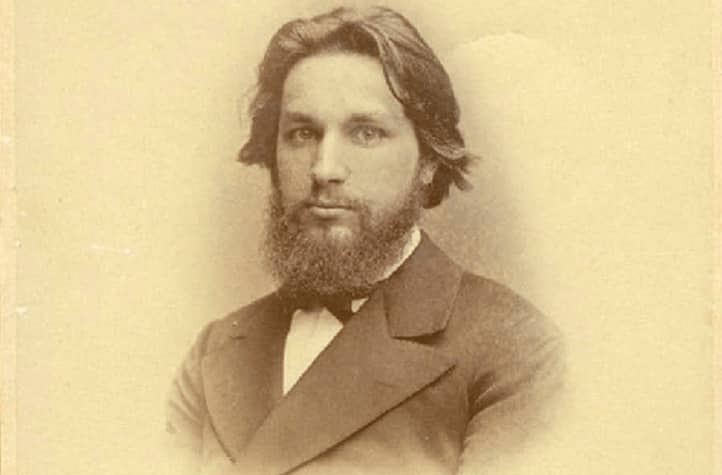
Historical Context
The term “voyeurism” first appeared in medical literature in the late 19th century. French psychiatrist Valentin Magnan in 1890 described a case of a man who experienced sexual arousal from observing women in public restrooms. However, the phenomenon undoubtedly existed long before its scientific description.
Interestingly, before the term “voyeurism” emerged, this behavior was often described by other words, such as scoptophilia (from the Greek σκοπέω – to look, and φιλία – love), which is still sometimes used as a synonym for voyeurism.
Evolution of Perceptions of Voyeurism Across Cultures
Throughout history, attitudes toward voyeurism have varied significantly across cultures. In some ancient societies, such as Ancient Greece and Rome, certain forms of public nudity and sexuality were more acceptable, potentially normalizing voyeuristic tendencies.
For example, in Ancient Greece, there were public baths (thermae) where men and women bathed separately but in relatively open spaces, creating opportunities for observation that, in the modern context, could be considered voyeurism.
In medieval Europe, with the strengthening influence of Christianity, any forms of sexual behavior outside of procreation were considered sinful. This led to voyeurism, like many other sexual practices, becoming taboo and condemned. However, this did not mean such behavior disappeared—it merely went underground.
During the Victorian era, despite an outwardly puritanical morality, voyeurism paradoxically flourished in the form of “peeping through keyholes” and other hidden observation practices. This era also marked the beginning of the first scientific studies of sexuality, including the works of Richard von Krafft-Ebing, who described voyeurism in his Psychopathia Sexualis (1886).
In some non-Western cultures, attitudes toward voyeurism could differ significantly. For example, in tribal societies where nudity was the norm, the concept of voyeurism might have been absent or had a completely different meaning.
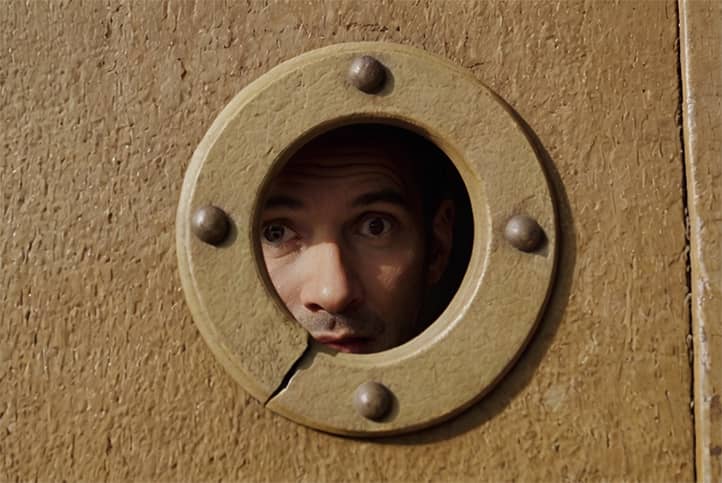
Motivations Behind Voyeuristic Behavior
Psychologists identify several primary motivations underlying voyeuristic behavior:
- Sexual Arousal: The most obvious motive, associated with obtaining sexual satisfaction from watching others. For some, the act of observation is itself more arousing than direct participation in sexual activity.
- Power and Control: A voyeur may feel a sense of power over the object of observation, who is unaware of their presence. This feeling can compensate for a lack of control in other aspects of life.
- Curiosity: Natural human curiosity about the sexual lives of others can evolve into voyeuristic tendencies, especially among adolescents and young adults who are just beginning to explore their sexuality.
- Social Isolation: Voyeurism can be a way to compensate for a lack of real social and sexual relationships. For some people, it may be a less intimidating way of “interacting” with others than real relationships.
- Traumatic Experience: Some researchers link the development of voyeurism with psychological trauma or attachment disruptions in childhood. For instance, a child who witnesses adult sexual behavior at a young age may develop voyeuristic tendencies as a way to process that experience.
- Adrenaline and Risk: For some voyeurs, the risk of being caught is an important aspect. The adrenaline rush associated with this risk can enhance sexual arousal.
- Low Self-Esteem: Voyeurism may be a means of sexual expression for people who consider themselves unattractive or unable to form normal sexual relationships.
Connection with Sexual Arousal and Satisfaction
Voyeurism is closely associated with mechanisms of sexual arousal and satisfaction. When observing the object of interest, a voyeur experiences a release of dopamine—a neurotransmitter responsible for feelings of pleasure and reward. This creates strong behavioral reinforcement and can lead to the formation of dependency.
Research shows that some voyeurs exhibit increased activity in certain brain regions associated with sexual arousal when viewing hidden or peeped images. This may indicate a neurobiological basis for voyeuristic tendencies.
It is essential to note that not all forms of voyeurism are pathological. Some researchers consider moderate manifestations of voyeurism as part of the normal spectrum of human sexuality, especially if they are limited to fantasies or mutually consensual actions.
However, when voyeuristic behavior becomes obsessive, interferes with normal life, or leads to violations of others’ rights, it may be considered a disorder requiring treatment.

Voyeurism in Popular Culture
The theme of voyeurism has frequently been central in works of art, particularly in cinema and literature, enabling exploration of complex psychological and social aspects of the phenomenon, as well as its influence on society.
In cinema, one of the most notable examples is Alfred Hitchcock’s Rear Window (1954), in which the main character, a photographer confined to a wheelchair, observes his neighbors’ lives and accidentally witnesses a murder. This film not only delves into the theme of voyeurism but also raises questions about the moral responsibility of the observer.
Other significant films that touch on the theme of voyeurism include:
- “Peeping Tom” (1960) by Michael Powell, which explores the psychology of a serial killer who films his victims’ deaths.
- “Blue Velvet” (1986) by David Lynch, in which the protagonist witnesses strange sexual rituals.
- “Sex, Lies, and Videotape” (1989) by Steven Soderbergh, examining the theme of video voyeurism and its impact on relationships.
- “American Psycho” (2000), where voyeurism is part of the protagonist’s broader psychopathic behavior.
In literature, voyeurism is also frequently depicted. For example, Vladimir Nabokov’s Lolita (1955) describes the voyeuristic tendencies of its protagonist. In contemporary literature, this theme often intertwines with issues of privacy and the influence of technology on society.
Other literary works that explore voyeurism include:
- “1984” by George Orwell, where voyeurism is used as a tool of totalitarian control.
- “The Collector” by John Fowles, which examines the psychology of a man who kidnaps and “collects” the object of his desire.
Impact on Shaping Public Opinion
The portrayal of voyeurism in popular culture significantly influences public perception of this phenomenon. On one hand, it promotes more open discussion of the topic and may help people dealing with such inclinations to better understand themselves and seek psychological help.
Cinema and literature often explore the moral and ethical aspects of voyeurism, prompting the viewer or reader to reflect on their own role as an observer. This promotes a deeper understanding of issues related to privacy and consent in modern society.
On the other hand, the depiction of voyeurism in art can lead to its romanticization or normalization, which presents an ethical issue. Some critics argue that excessive attention to voyeurism in the media contributes to the growth of similar behavior in real life.
It’s essential that art raises questions about privacy boundaries, consent, and the potential harm associated with voyeurism. This can lead to a more informed and responsible societal approach to the issue.

Legal and Ethical Issues
The legal status of voyeurism varies across different countries and jurisdictions, but there is a general trend toward criminalization, especially when it involves unauthorized surveillance of private life.
In most developed countries, laws prohibit:
- Unauthorized recording or surveillance of individuals in places where they have a reasonable expectation of privacy (e.g., bathrooms, dressing rooms, private homes).
- Distribution of intimate images without the consent of those depicted. This is especially relevant in the context of so-called “revenge porn.”
- Voyeuristic acts targeting minors, considered a particularly severe crime and often addressed under laws concerning sexual offenses against children.
- Use of hidden cameras or other devices for covert observation in private spaces.
Penalties for voyeurism may include fines, imprisonment, and registration as a sex offender. The severity of the punishment generally depends on the nature of the offense, the age of the victim, and the presence of previous violations.
For example, in the United States, voyeurism laws differ from state to state, but in general, they criminalize acts of “invasion of privacy” with sexual intent. In the United Kingdom, voyeurism was included in the Sexual Offences Act of 2003, making it a prosecutable offense.
In some countries, like Japan, laws on voyeurism have been tightened in response to the proliferation of hidden cameras in public places. In 2014, Japan passed a law prohibiting unauthorized filming in public spaces with sexual intent.
It’s important to note that legislation in this area is continually evolving, especially in response to new technological challenges, such as camera-equipped drones or remote access programs for webcams.
Invasion of Privacy and Consent
A central ethical issue in the context of voyeurism is the violation of privacy rights and the lack of consent on the part of the observed individual. This raises essential philosophical and legal questions about the boundaries of personal space in today’s world.
The concept of privacy is a fundamental human right, recognized in the Universal Declaration of Human Rights and in many national constitutions. Voyeurism directly violates this right, encroaching upon a person’s private space without their knowledge.
Consent is a key element in ethical discussions about voyeurism. In most cases of voyeuristic behavior, consent is absent, making such actions unethical and often illegal. However, the situation becomes more complex in the context of certain modern practices, such as reality shows or live-streaming personal lives on the internet, where boundaries of consent may be blurred.
This issue is particularly acute in the digital age, where the possibilities for covert observation have significantly expanded. This calls for constant updates to legislation and ethical standards to protect citizens’ privacy.
Ethical dilemmas also arise regarding the use of surveillance technologies for safety purposes. For instance, using CCTV cameras in public places could be seen as a form of mass voyeurism, though justified by considerations of public safety.
It’s worth noting that in some contexts, such as BDSM practices, elements of voyeurism may be part of consensual relationships between adults. However, even in such cases, clear discussions about boundaries and obtaining explicit consent from all participants are crucial.
Overall, ethical discussions around voyeurism underscore the need for a balance between personal freedom, privacy, and public safety in society.
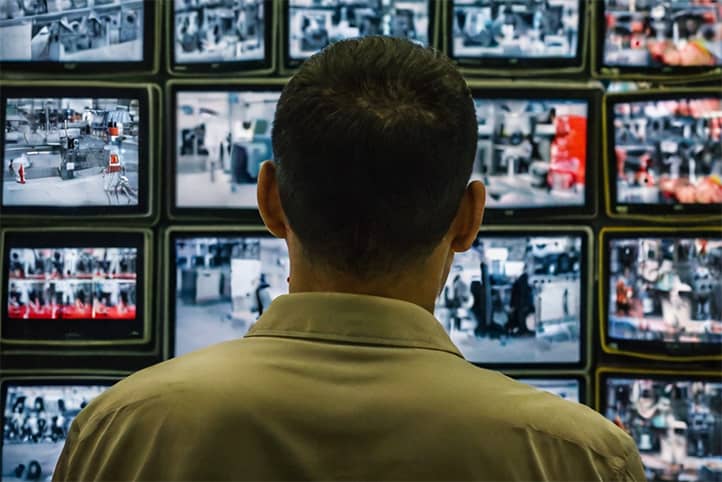
Modern Technology and Voyeurism
The development of the internet and social media has radically altered the landscape of voyeurism. On the one hand, it has created new opportunities to satisfy voyeuristic tendencies; on the other, it has blurred the lines between public and private, raising new ethical dilemmas.
Social networks like Instagram, TikTok, and OnlyFans allow users to share intimate moments of their lives with a broad audience. This creates a sort of “legalized” form of voyeurism, where observation occurs with the explicit or implied consent of the subject.
The phenomenon of “oversharing” on social media has led people to publicly display aspects of their lives once considered strictly private. This changes traditional notions of privacy and can contribute to the normalization of voyeuristic behavior.
The emergence of live streaming platforms has created a new form of interactive voyeurism, where viewers can watch others’ lives in real time and even influence their actions through comments and virtual gifts.
However, this also devalues the boundaries of privacy and may contribute to the normalization of voyeuristic behavior in general. Additionally, it raises concerns about whether people, particularly young people, fully understand the potential consequences of sharing personal information online.
The internet has also made pornographic materials, including those that simulate voyeuristic scenarios, easily accessible. This also contributes to the development and reinforcement of voyeuristic tendencies in some people.
The Issue of Hidden Cameras and Cyber Voyeurism
Technological advancements have led to the emergence of miniature, high-quality cameras that are easy to hide, creating new opportunities for unlawful voyeurism, such as installing hidden cameras in public places, hotels, and even private homes.
The issue of hidden cameras has become so serious that some countries, like South Korea, have introduced special services for detecting hidden cameras in public places and hotels.
Cyber voyeurism is another serious modern problem, involving:
- Hacking attacks on webcams and “smart home” devices. Perpetrators can gain remote access to cameras on computers, smartphones, or home automation devices such as baby monitors or security cameras.
- Unauthorized access to personal photos and videos through cloud storage. Hacking accounts in cloud services can lead to leaks of personal materials.
- The spread of “revenge porn” – intimate materials distributed without the consent of those depicted. This is particularly problematic, as such materials can quickly spread online and cause significant psychological harm to victims.
- The use of spyware to monitor partners or family members. Such programs can secretly record user activity on a device, including private correspondence and photos.
- Sexting under coercion, where perpetrators manipulate or blackmail victims into sending intimate photos or videos.
Combating these forms of voyeurism requires not only legislative measures but also increased digital literacy among the population, as well as the development of more advanced data protection systems.
Technology companies also play a critical role in addressing this issue. For example, many smartphone and laptop manufacturers now include physical shutters for webcams, and software developers are constantly improving security and data encryption systems.
However, despite all precautionary measures, it is practically impossible to eliminate the risk of cyber voyeurism in today’s digital world. This emphasizes the importance of a conscious and responsible approach to technology use and sharing personal information online.

The Line Between Fantasy and Reality
It’s important to differentiate voyeuristic fantasies from actual voyeuristic behavior. Fantasies about peeking or watching others in intimate settings are fairly common and, on their own, are not problematic unless they lead to actions that violate others’ rights.
Many people may experience voyeuristic fantasies that they never act on in reality. Such fantasies are part of the normal range of sexual thoughts and don’t require treatment if they don’t cause distress to the individual.
Psychologists note that fantasies can serve several functions:
- A means of exploring one’s sexuality in a safe, imagined environment.
- A coping mechanism for stress or anxiety.
- A source of sexual arousal without risk to oneself or others.
- A way of compensating for a lack of real sexual experience.
However, issues arise when fantasies cross into real actions that violate others’ privacy and rights. This line between fantasy and reality is key in terms of ethics and law.
Factors that may contribute to the transition from fantasy to real actions include:
- Impulsivity and lack of self-control.
- Distorted perceptions of consent and the rights of others.
- Addictive behavior, where fantasies no longer bring satisfaction.
- Social isolation and difficulty forming healthy relationships.
- The influence of pornography, especially materials depicting unrealistic or unethical scenarios.
Potential Risks and Consequences
Acting on voyeuristic tendencies in real life can have serious negative consequences for both the voyeur and the subjects being observed:
- Legal consequences. Voyeuristic actions can lead to criminal prosecution, fines, and imprisonment. In some jurisdictions, voyeurs may be added to the sex offender registry, with long-term consequences for their lives and careers.
- Social consequences. Disclosure of voyeuristic tendencies can lead to stigmatization, job loss, and relationship breakdowns. Public condemnation can be particularly strong in conservative communities.
- Psychological consequences for those observed. Victims of voyeurism may experience anxiety, depression, PTSD, and other psychological problems. The violation of safety and privacy can have long-term effects on the mental health of victims.
- Escalation of behavior. In some cases, voyeurism may be a first step towards more serious sexual offenses. Although most voyeurs do not progress to violent actions, there is a risk of behavioral escalation, especially if it remains unaddressed and untreated.
- Addiction. Voyeuristic tendencies can acquire addictive qualities, negatively impacting all areas of a person’s life. Like other forms of sexual addiction, voyeurism can lead to neglect of work, relationships, and other important areas of life.
- Psychological consequences for the voyeur. Persistent feelings of guilt, fear of exposure, and conflict between desires and moral norms can lead to the development of anxiety and depressive disorders in the voyeur.
- Reputational risks. In the age of social media, information about voyeuristic behavior can spread quickly, causing irreparable damage to a person’s reputation.
- Financial consequences. In addition to potential fines, voyeurs may face civil lawsuits from victims, which can lead to significant financial losses.
Understanding these risks is important both for preventing voyeuristic behavior and for developing effective treatment strategies and support for people facing this issue.
Many of these risks and consequences can be prevented or minimized with timely professional help. Psychotherapy and other forms of treatment help individuals with voyeuristic tendencies find healthy ways to express their sexuality and build relationships.

Methods of Treating Voyeurism
Treating voyeurism typically requires a comprehensive approach involving various therapeutic methods:
- Cognitive-behavioral therapy (CBT). This method helps patients identify and change harmful thoughts and behavioral patterns associated with voyeurism. CBT may include impulse control techniques, restructuring cognitive distortions, and developing stress-coping skills. For example, patients may learn to recognize triggers that provoke voyeuristic urges and develop alternative responses to these triggers.
- Psychodynamic therapy. This approach focuses on exploring unconscious conflicts and early life experiences that may have contributed to the development of voyeuristic tendencies. For example, a therapist may help a patient explore how early relationships with parents or experiences of sexual development influenced the formation of voyeuristic tendencies.
- Group therapy. Participation in support groups can help patients overcome the sense of isolation and shame associated with their behavior. Groups specializing in sexual addictions or paraphilias are particularly helpful.
- Pharmacological treatment. In some cases, medications such as selective serotonin reuptake inhibitors (SSRIs) or antiandrogens may be prescribed to reduce sexual desire and obsessive thoughts. For instance, drugs that lower testosterone levels can help reduce the intensity of sexual impulses.
- Mindfulness and meditation. These practices help patients develop greater awareness of their thoughts and impulses, which contributes to better self-control. Mindfulness techniques can be especially helpful for managing anxiety and impulsivity often associated with voyeuristic behavior.
- Acceptance and commitment therapy. This approach helps patients accept their thoughts and feelings without needing to act on them, developing psychological flexibility.
- Family therapy. In cases where voyeuristic behavior affects family relationships, family therapy can help rebuild trust and improve communication.
- Lifestyle modification therapy. This approach includes changing everyday habits that contribute to voyeuristic behavior, such as excessive internet use or social isolation.
The Role of Psychotherapy and Behavioral Therapy
Psychotherapy plays a central role in treating voyeurism. It helps patients:
- Understand the roots of their behavior. Psychotherapy helps uncover psychological factors contributing to voyeuristic tendencies, such as low self-esteem, difficulty forming close relationships, or unresolved psychological trauma. For example, a patient may realize that their voyeuristic behavior is a way to compensate for feelings of inadequacy or fear of intimacy.
- Develop empathy. A crucial part of psychotherapy is helping patients understand the impact of their actions on voyeurism victims, which can become a powerful motivator for behavioral change. Therapists may use role-playing or other techniques to help patients put themselves in their potential victims’ shoes.
- Learn healthy ways to express sexuality. Psychotherapy enables patients to find more adaptive and ethical ways to satisfy their sexual needs. This may include training in skills for building healthy sexual relationships, developing sexual self-awareness, and exploring alternative forms of sexual expression.
- Improve interpersonal communication skills. Many people with voyeuristic tendencies struggle to form close relationships. Psychotherapy helps improve these skills, including effective communication, conflict management, and emotional expression.
- Manage triggers and relapse risks. Behavioral psychotherapy is particularly effective in developing relapse prevention strategies and managing high-risk situations. This may include relaxation techniques, action planning in stressful situations, and developing healthy coping methods.
- Address comorbid issues. Voyeurism often coexists with other psychological issues, such as depression, anxiety, or low self-esteem. Psychotherapy addresses these issues comprehensively.
- Develop self-awareness and self-acceptance. Psychotherapy helps patients better understand their thoughts, feelings, and motivations, and learn to accept themselves without judgment, which is an important step toward changing problematic behavior.
- Work on feelings of guilt and shame. Many people with voyeuristic tendencies experience strong feelings of shame and guilt. Psychotherapy helps address these emotions constructively without letting them impede the recovery process.
It’s important to note that treating voyeurism is often a long-term process requiring strong patient motivation. The success of psychotherapy largely depends on the person’s willingness to acknowledge the problem and work toward its resolution.
Moreover, the psychotherapeutic approach should be individualized, considering the specific circumstances, history, and needs of each patient. Some people may require a combination of various therapeutic methods for optimal results.
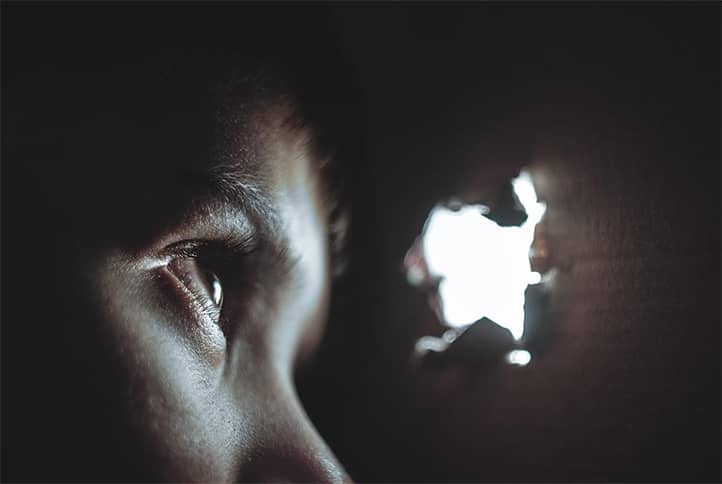
Conclusion
Voyeurism is a complex phenomenon at the intersection of psychology, sexology, ethics, and law. In a modern world where the boundaries between public and private are increasingly blurred, and technology opens new possibilities for observation, issues related to voyeurism are particularly relevant.
Perceptions and evaluations of voyeurism have changed significantly across cultures and eras, reflecting broader social norms and values. From relative tolerance in some ancient societies to strict taboos in the Victorian era, attitudes towards voyeurism have deep historical roots. The psychological motives of voyeurism are diverse and can include not only sexual arousal but also a desire for power, compensation for social isolation, and other factors. Understanding these motives is important for effective treatment and prevention.
The portrayal of voyeurism in popular culture not only promotes public discussion of this topic but may also lead to its normalization or romanticization. Cinema and literature play a significant role in shaping public perceptions of voyeurism. Legal regulation of voyeurism is becoming increasingly stringent, particularly in the context of privacy protection and combating cybercrime. Legislation in this area is constantly evolving in response to new technological challenges.
Treating voyeurism requires a comprehensive approach that includes psychotherapy, behavioral therapy, and, in some cases, pharmacological treatment. The success of therapy largely depends on patient motivation and an individualized approach.
Further research on voyeurism may focus on studying the impact of digital technology and social media, developing more effective prevention and treatment methods, exploring the neurobiological underpinnings of voyeuristic behavior, analyzing cultural differences in the perception of voyeurism, examining the long-term psychological effects on victims, exploring the ethical aspects of surveillance technologies, and analyzing the effectiveness of various legislative approaches to regulating voyeurism.
In conclusion, voyeurism remains a complex and multifaceted topic that requires further study and discussion. Understanding this phenomenon is important not only for effectively addressing related issues but also for a deeper understanding of human sexuality, privacy, and ethical standards in modern society. Only through open dialogue and a multidisciplinary approach can we hope to find a balance between personal freedom, safety, and respect for privacy in the digital age.




